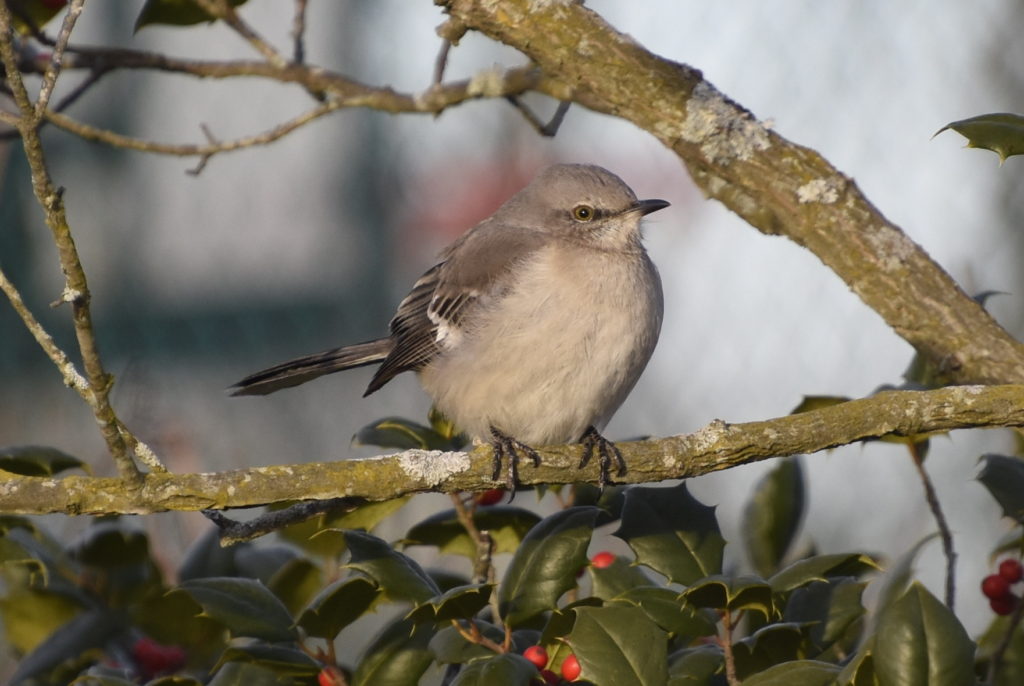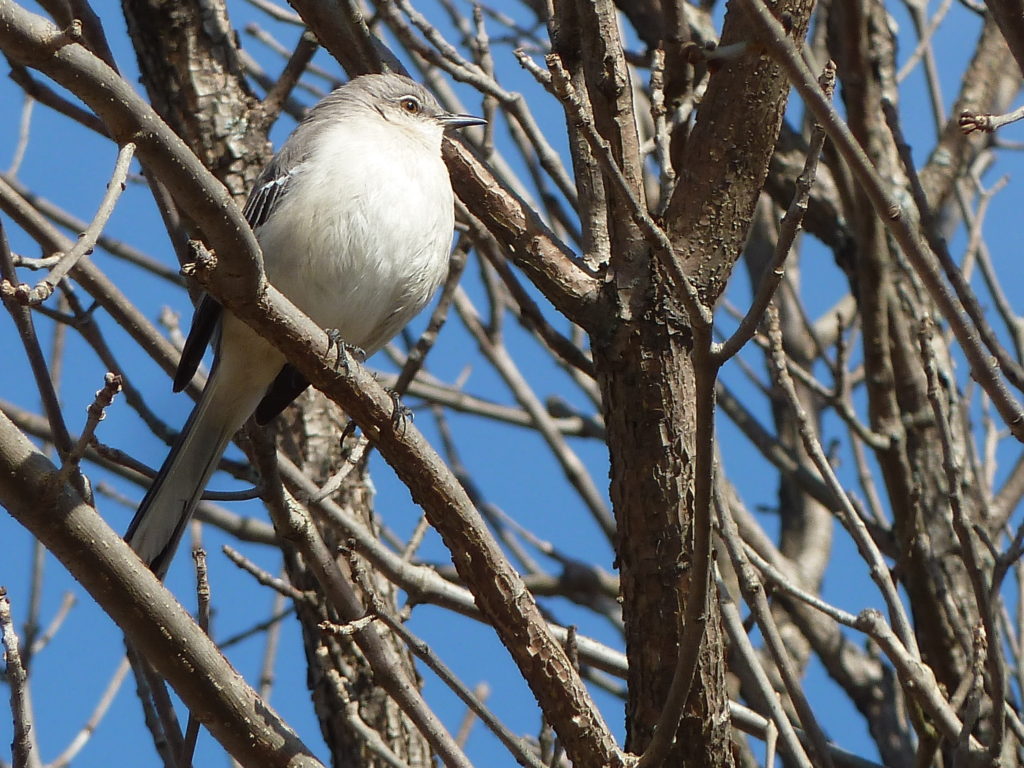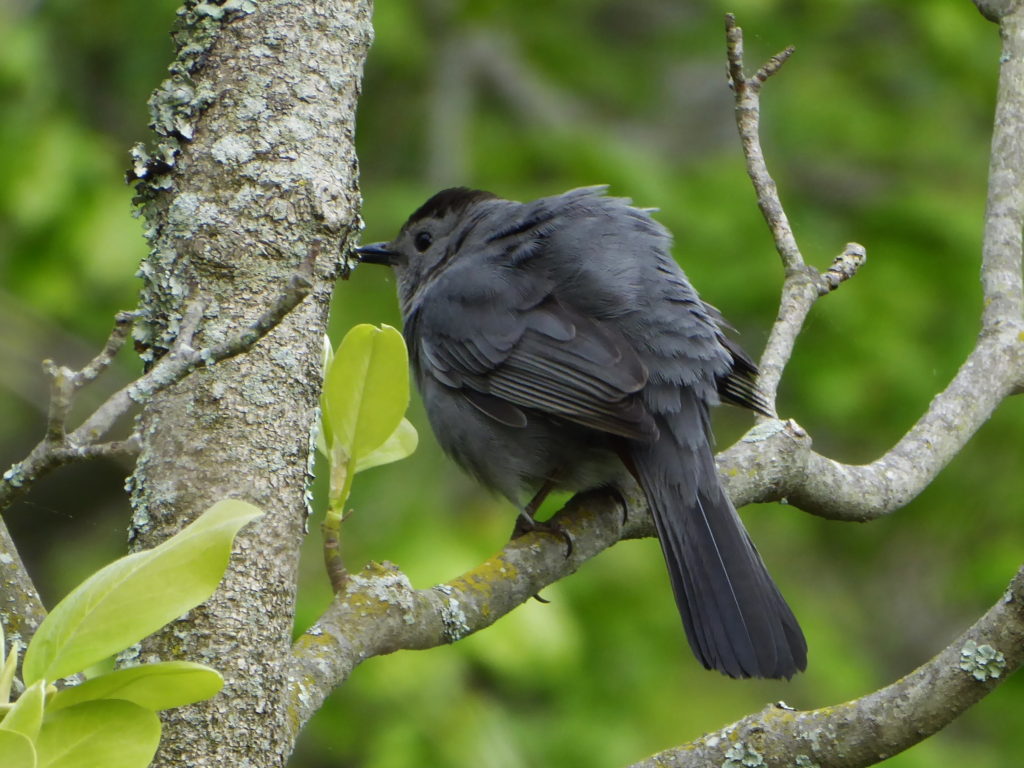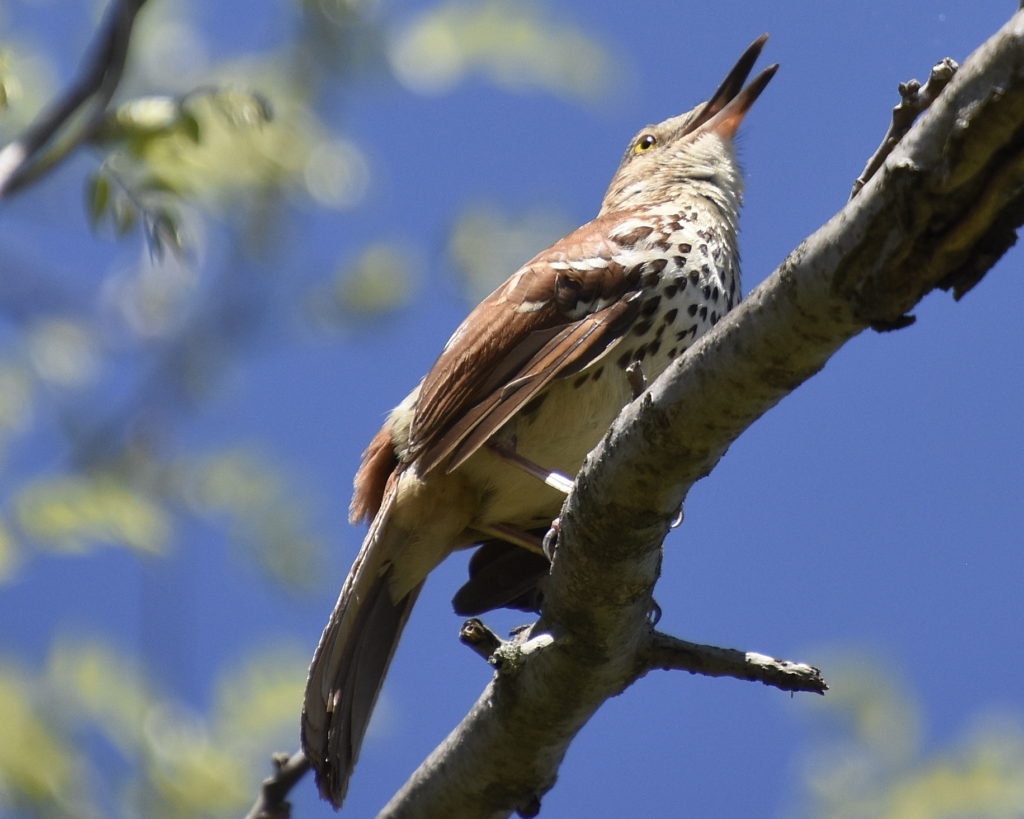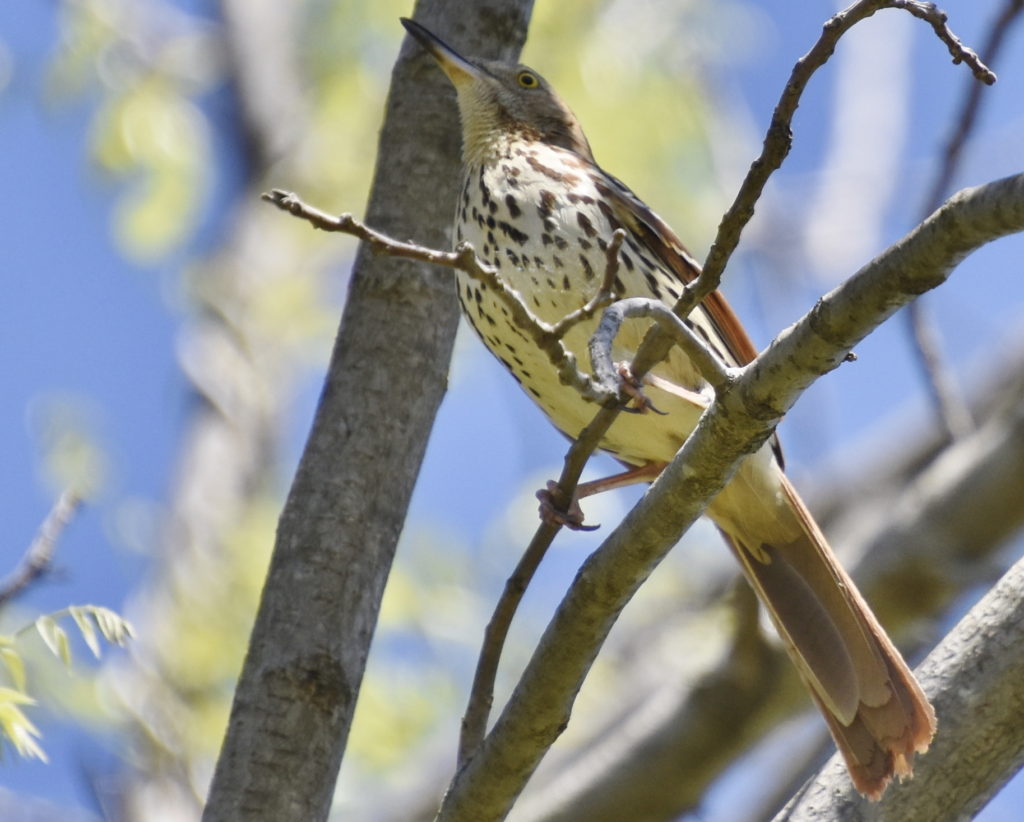Mockingbird, Catbird, Thrasher
Three birds in our area are known for their ability to mimic the vocalizations (songs and calls) of other birds and even mechanical sounds. The members of this group are the Northern Mockingbird, Gray Catbird and Brown Thrasher. They are roughly Robin sized birds but slimmer in appearance and with longer tails. Very common near human habitation, members of this family like low tangles, underbrush, and shrubs, with access to open areas like suburban lawns. They are master songsters and at times will sing incessantly, repeating a series of phrases and rhythms. Their omnivourous diet includes insects, berries and fruits.
The Northern Mockingbird is a year round resident. Most aggressive of the group, especially during nesting season, when it will attack people and pets who come near a nest. It is a slim, pale gray bird with a long tail, relatively long dark bill, a yellowish eye, and a thin dark eye-line. It has a pair of white wing bars and white edges to the tail feathers. In flight, the white patches become most noticeable, and are very distinctive field marks. A singing Mockingbird usually repeats phrases three to six times. Not shy when vocalizing, it can often be seen sitting in the open on an exposed branch or top of a shrub. Look for it in our meadow, shrubs, and along the perimeter path. You will probably hear it before you see it.
Of the group, the Gray Catbird is the most secretive and likes to hide in the underbrush making a variety of musical sounds and often a catlike mewing. It is most common in late Spring and through the Summer and only occasionally seen in late Fall and Winter. It is a plain dark gray bird, with no wing bars, a black cap, and a very distinctive chestnut color on the underside near the tail. The Catbird favors leafy thickets along woodland edges and wetland areas. Look for it along the brambles bordering the perimeter path, and on our woodland trails.
While the Mockingbird is often thought of as a premier songster, with a repertoire as large as 240 distinct songs, it pales in comparison to the Brown Thrasher. The Thrasher’s songbook contains at least 1,000 items and probably considerably more. Unlike a Mockingbird, a Thrasher repeats its phrases two or three times. Its habitat is similar to the other mimics, including shrubs, brambles, and open lawn areas. This is a very striking bird, rufous-brown above, with teardrop shaped spots on white underparts. Its bill is the longest of the three mimic, and it has a distinctive yellow cast to its eye. The Thrasher is the shyest, and least likely to be seen here, although it is not uncommon in our area.
Text and photographs by Robert Koch

